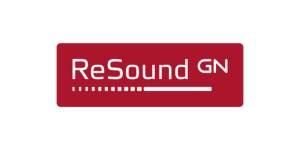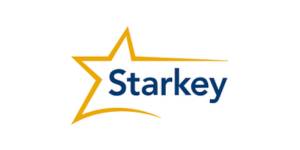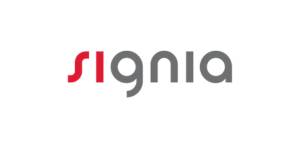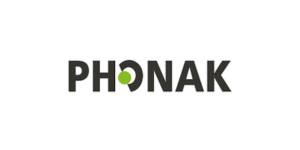Discover Premium Hearing Aids in Beaverton, Oregon
Unleash the potential of your hearing! At Able Hearing in Beaverton, Oregon, our expert audiologists are dedicated to transforming lives through enhanced hearing.
Experience the utmost clarity and precision in life’s meaningful moments. With personalized care, we truly comprehend your objectives and craft an individualized plan.
Don’t allow hearing loss to hinder your progress – seize control today: Place your trust in Able Hearing, your premier destination in Beaverton, Oregon.
Get Your Free Consultation:
Get advice from our experts. Schedule your in-depth consultation now.
Taking the First Step: Conquering Fear and Denial of Hearing Problems
Dealing with hearing issues can be challenging. Sometimes, we hesitate to confront them because we’re afraid or in denial. At Able Hearing Beaverton, we recognize these emotions and the difficulties they can create.
Many of us avoid addressing our hearing concerns out of fear of getting older or having to use hearing aids. Ignoring hearing problems can lead to communication difficulties and strained relationships. Taking action can significantly enhance our quality of life.
Our team is here to offer understanding and assistance. We conduct comprehensive assessments, provide expert guidance, and offer modern hearing solutions tailored to your lifestyle. Don’t let fear or denial hold you back. Reach out to Able Hearing Beaverton today to take the first step toward better hearing health and stronger connections.
Why Choose Us
30 YEARS OF EXPERIENCE & A STRONG REPUTATION
At Able Hearing Beaverton, we believe our clients should turn to us for their hearing aid consultations because of our dedication to top-notch care and a compassionate, reliable approach.
Our highly skilled experts use state-of-the-art technology to offer precise evaluations and customized solutions tailored to each person's unique needs.
Choosing the right hearing aid is a big decision, so we take the time to listen to our patients and understand their concerns and preferences.
Through our ongoing support and education, we ensure our clients achieve the best possible results and can make informed choices about their hearing health.
Trust Able Hearing Beaverton for excellent hearing aid consultations that enhance your quality of life.
HIGHLY-QUALIFIED PROFESSIONALS
Experienced experts delivering outstanding hearing aid care.
STATE-OF-THE-ART EQUIPMENT
State-of-the-art technology for the best hearing aid assistance.
FAST & AFFORDABLE SERVICES
We provide quick and dependable hearing aid assistance without breaking the bank.
SATISFACTION GUARANTEED
Your happiness is what matters most to us. Rely on us for all your hearing aid requirements.
Explore Solutions
Your Path to Better Hearing, One Step at a Time
At Able Hearing Beaverton, we recognize the importance of clear, vibrant sound in enhancing your life. Our step-by-step approach empowers you to take charge of your hearing health and begin a transformative journey toward improved hearing.
Step 1: Arrange a Hearing Consultation
Get in touch with us to set up a hearing consultation with our expert audiologists. We’ll discuss your worries, answer your questions, and guide you through the process.
Step 2: Thorough Hearing Assessment
During the hearing assessment, our audiologists will carefully evaluate your hearing capabilities. We utilize advanced techniques to examine your hearing well-being and determine any potential hearing loss.
Step 3: Tailored Hearing Solutions
Based on the results of your hearing assessment, our audiologists will suggest personalized hearing solutions that suit your unique needs. We’ll talk about various choices, including different types and styles of hearing aids, to help you make an informed decision.
Step 4: Fitting and Customizing Your Hearing Aids
Once you’ve selected your preferred hearing aids, we’ll arrange a fitting appointment. Our audiologists will ensure a comfortable fit and adjust the devices to match your individual hearing profile. We’ll also provide guidance on how to use and care for your new hearing aids.
Step 5: Ongoing Assistance and Check-Ins
At Able Hearing Beaverton, our dedication to your hearing well-being doesn’t end after the initial fitting. We offer continuous support, including follow-up appointments to fine-tune your hearing aids, address any concerns, and ensure your lasting satisfaction.
Discover Advanced Hearing Care at Able Hearing in Beaverton, Oregon.
Our expert team, state-of-the-art technology, and individualized approach guarantee top-notch hearing solutions.
Book your consultation today!
What We Do
Hearing Services
Discover top-quality hearing aid services at Able Hearing in Beaverton, Oregon. Our experienced technicians provide expert repairs, adjustments, and maintenance to maximize your hearing aids’ performance.
We emphasize tailored fittings to find the perfect hearing aid for you, delivering excellent service and assistance to improve your hearing journey.

AUDIOLOGIST SERVICES
Our trained hearing experts provide thorough hearing assessments and customized solutions to enhance your hearing well-being.

HEARING AID STORE SERVICES
Discover a variety of hearing aids from leading brands, customized to suit your preferences and requirements, at our convenient shop.

HEARING AID REPAIR SERVICES
Our skilled technicians offer quick and efficient repairs, guaranteeing your hearing aids work at their best for clear, natural sound.
Find Your Perfect Hearing Solution: Styles and Brands
Explore a variety of hearing aids and premium brands at Able Hearing Beaverton to match your requirements. Whether you prefer discreet in-ear options or larger behind-the-ear models, we offer choices that suit your lifestyle.
Our selection includes the latest designs and technology, including nearly invisible options like in-the-canal (ITC) and completely-in-the-canal (CIC) styles, as well as popular in-the-ear (ITE) models.
We proudly partner with renowned hearing aid brands to provide a clear and natural sound. Our experienced audiologists take your hearing loss, lifestyle, and preferences into account to guide your selection, ensuring your chosen hearing aid effectively meets your needs.





Let Us Help
Able Hearing Beaverton: Dedicated to Your Hearing Wellness
Welcome to Able Hearing Beaverton, a respected audiology practice in Beaverton, Oregon, with a 30-year history in the community.
Our mission is to provide you with outstanding hearing care, promoting a life of clarity and self-assurance. Led by skilled audiologists, our empathetic and knowledgeable approach caters to your specific requirements and way of life.
We go beyond offering hearing healthcare; we foster relationships and enrich lives by bringing back the pleasure of sound.
Book an appointment today to encounter our compassionate assistance as you progress toward improved hearing health.
Contact Us
Schedule Your Free Consultation
Complete the Form for Expert Advice!

Got Questions?
CHECK OUT OUR FAQS
Why Should You Choose Able Hearing Beaverton for Your Hearing Needs?
At Able Hearing Beaverton, we take pride in our team of highly skilled and experienced hearing care experts. With a proven history of successful cases, our specialists are committed to providing outstanding care and guidance. We are dedicated to helping our clients achieve their hearing goals with the utmost satisfaction. Place your trust in our expertise as we work together toward a world of improved hearing for you.
What Services Does Able Hearing Beaverton Provide?
We offer a comprehensive range of hearing care services to address all aspects of hearing health. Our services encompass hearing evaluations, hearing aid consultations, expert fittings, maintenance, repairs, specialized tinnitus evaluation and management, custom earplugs for hearing protection, and more. No matter what your hearing needs may be, we have the knowledge to provide personalized solutions.
How Can You Schedule a Consultation or Hearing Evaluation at Able Hearing Beaverton?
Booking a consultation or hearing evaluation is simple. Just visit our contact page! Our friendly team will be delighted to assist you in arranging an appointment that suits your schedule. Whether you have specific hearing concerns or are interested in hearing aid options, we are here to provide individualized care and support every step of the way.
Does Able Hearing Beaverton Accept Insurance for Hearing Services?
Yes, we collaborate with various insurance providers to make hearing care more accessible to our clients. We can assist you in understanding your insurance coverage and guide you through the process. Additionally, we offer financial assistance options to support your hearing care needs.
What Sets Able Hearing Beaverton Apart from Other Hearing Centers?
At Able Hearing Beaverton, we believe in personalized and compassionate care. Our devoted team takes the time to listen to your concerns and comprehend your unique hearing challenges. We customize our services to meet your specific needs and preferences, ensuring a positive and comfortable experience. With state-of-the-art technology and a client-centered approach, we are committed to empowering you with better hearing and an improved quality of life.










